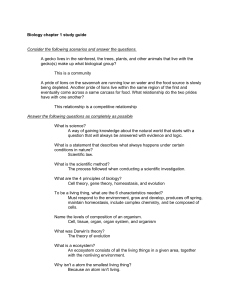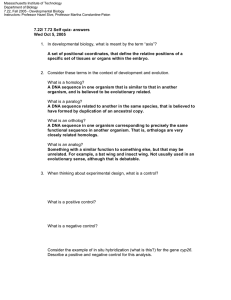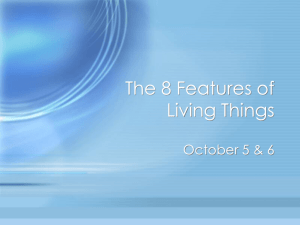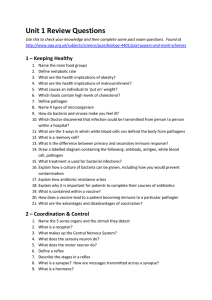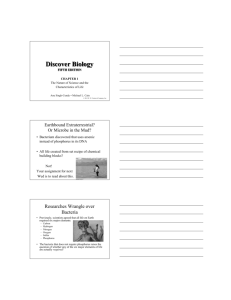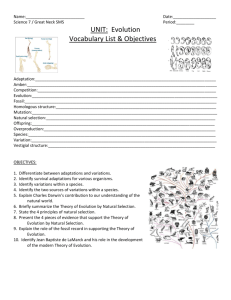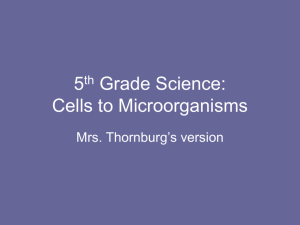Chapter 1 Exam Review
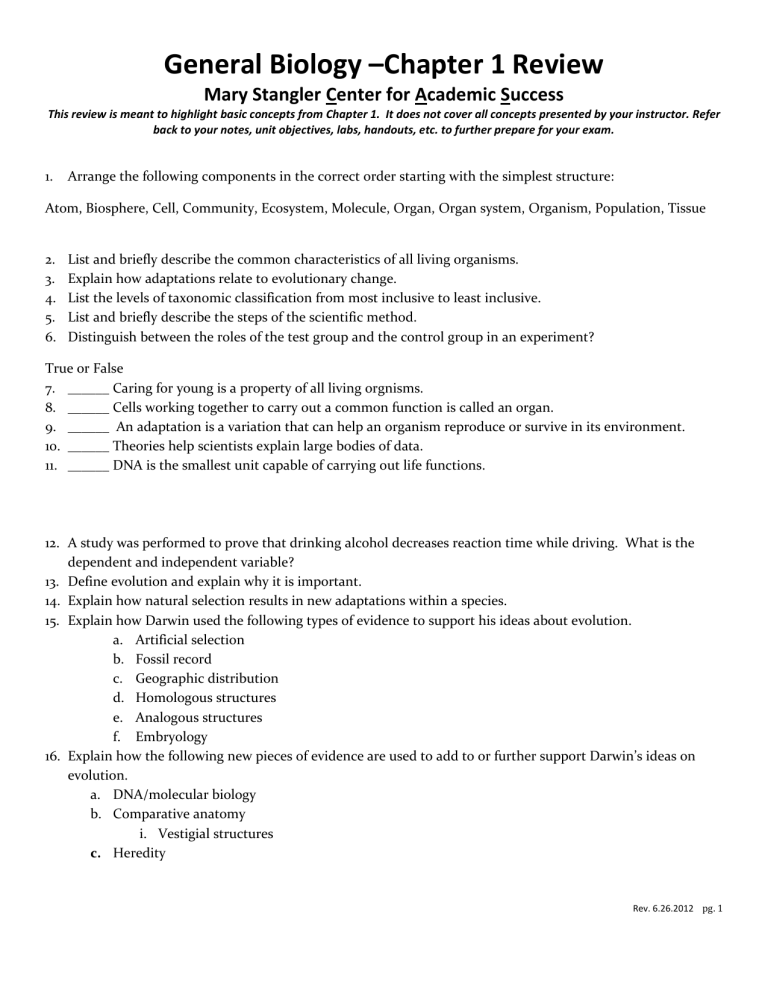
General Biology –Chapter 1 Review
Mary Stangler Center for Academic Success
This review is meant to highlight basic concepts from Chapter 1. It does not cover all concepts presented by your instructor. Refer back to your notes, unit objectives, labs, handouts, etc. to further prepare for your exam.
1.
Arrange the following components in the correct order starting with the simplest structure:
Atom, Biosphere, Cell, Community, Ecosystem, Molecule, Organ, Organ system, Organism, Population, Tissue
2.
List and briefly describe the common characteristics of all living organisms.
3.
Explain how adaptations relate to evolutionary change.
4.
List the levels of taxonomic classification from most inclusive to least inclusive.
5.
List and briefly describe the steps of the scientific method.
6.
Distinguish between the roles of the test group and the control group in an experiment?
True or False
7.
______ Caring for young is a property of all living orgnisms.
8.
______ Cells working together to carry out a common function is called an organ.
9.
______ An adaptation is a variation that can help an organism reproduce or survive in its environment.
10.
______ Theories help scientists explain large bodies of data.
11.
______ DNA is the smallest unit capable of carrying out life functions.
12.
A study was performed to prove that drinking alcohol decreases reaction time while driving. What is the dependent and independent variable?
13.
Define evolution and explain why it is important.
14.
Explain how natural selection results in new adaptations within a species.
15.
Explain how Darwin used the following types of evidence to support his ideas about evolution. a.
Artificial selection b.
Fossil record c.
Geographic distribution d.
Homologous structures e.
Analogous structures f.
Embryology
16.
Explain how the following new pieces of evidence are used to add to or further support Darwin’s ideas on evolution. a.
DNA/molecular biology b.
Comparative anatomy i.
Vestigial structures c.
Heredity
Rev. 6.26.2012 pg. 1

